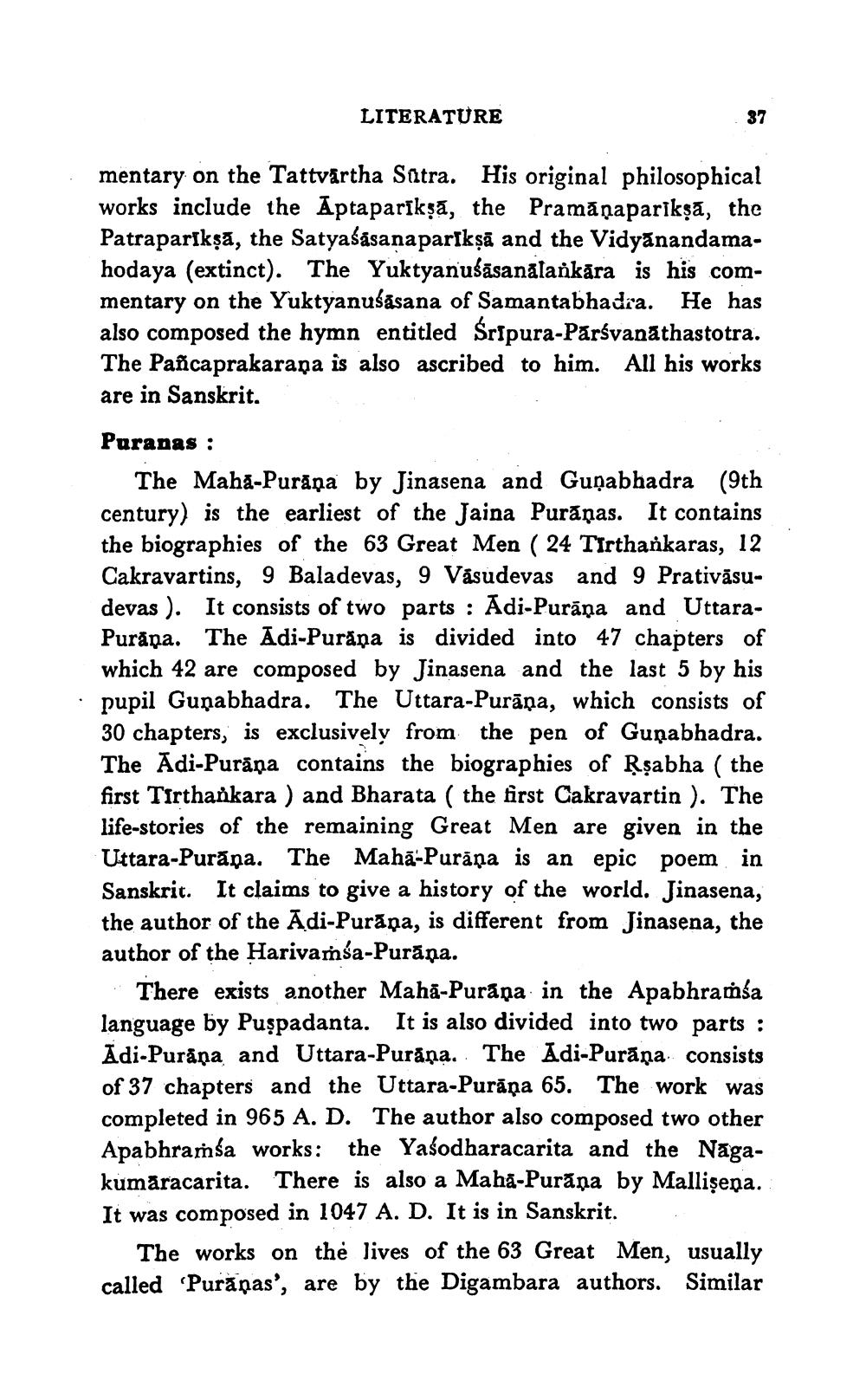________________
LITERATURE
3
mentary on the Tattvärtha Satra. His original philosophical works include the Aptapariksā, the Pramāņaparikṣā, the Patraparskṣā, the Satyaśāsana par[kşā and the Vidyānandamahodaya (extinct). The Yuktyanušāsanālankāra is his commentary on the Yuktyanuśásana of Samantabhadra. He has also composed the hymn entitled śrípura-Parśvanāthastotra. The Pañcaprakarana is also ascribed to him. All his works are in Sanskrit.
Puranas:
The Maha-Purāņa by Jinasena and Guṇabhadra (9th century) is the earliest of the Jaina Purāņas. It contains the biographies of the 63 Great Men ( 24 Tirthankaras, 12 Cakravartins, 9 Baladevas, 9 Vasudevas and 9 Prativāsudevas ). It consists of two parts : Adi-Purāņa and UttaraPurana. The Adi-Puräna is divided into 47 chapters of which 42 are composed by Jinasena and the last 5 by his pupil Gunabhadra. The Uttara-Purāņa, which consists of 30 chapters, is exclusively from the pen of Gunabhadra. The Adi-Purāņa contains the biographies of Rşabha ( the first Tirthankara ) and Bharata ( the first Cakravartin ). The life-stories of the remaining Great Men are given in the Uttara-Purāņa. The Maha-Purāņa is an epic poem in Sanskrit. It claims to give a history of the world. Jinasena, the author of the Adi-Purāpa, is different from Jinasena, the author of the Harivamsa-Purāna.
There exists another Maha-Purāņa in the Apabhramsa language by Puşpadanta. It is also divided into two parts: Ādi-Purana and Uttara-Puråņa. The Adi-Purāņa consists of 37 chapters and the Uttara-Purāna 65. The work was completed in 965 A. D. The author also composed two other Apabhramśa works: the Yasodharacarita and the Nagakumaracarita. There is also a Maha-Purāņa by Mallisena. It was composed in 1047 A. D. It is in Sanskrit. .
The works on the lives of the 63 Great Men, usually called 'Puranas', are by the Digambara authors. Similar




